When I first heard about this blog hop, all I could think of was the Randy Newman theme song for Monk “It’s a Jungle Out There”. I wanted to make some sort of urban block, so I looked through my collection of old blocks for inspiration. I came up with City Streets by Nancy Page. Be sure to see the blocks presented by the other designers at the bottom of this page. They might have a more traditional view of a jungle.
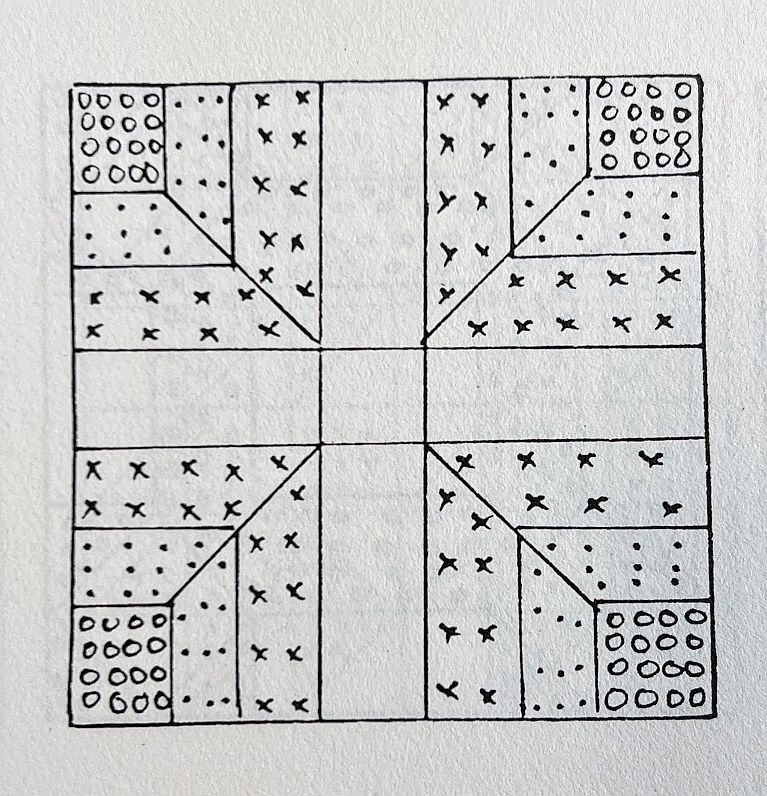
Nancy Page was the pen name of Florence LaGanke Harris. She wrote a syndicated quilt pattern column that appeared in various newspapers during the 1930’s. She was a well known home economist that promoted a number of different home crafts in her columns, such as cooking and needlework.
In 1932, she began a series called the Nancy Page Tuesday Quilt Club. This was a series of designs for quilts. These patterns continued into the early 1940’s, but stopped during the paper shortage of WWII. When the war ended, she did not resume her column. She would have been about 60 or so. Perhaps she retired.
The City Streets Quilt Block
The City Streets block is typically described as a geometric design that resembles an aerial view of city blocks or a street grid. There is a variation of it that becomes a churn dash when set side-by-side but the original version looks more like courthouse steps.
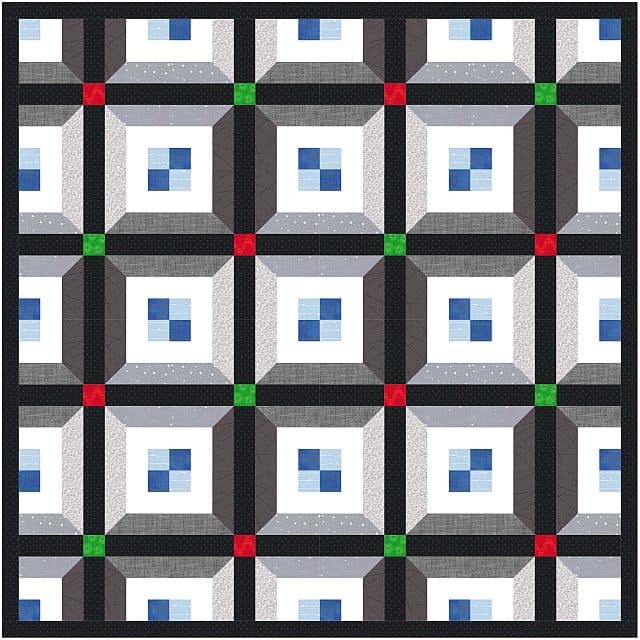
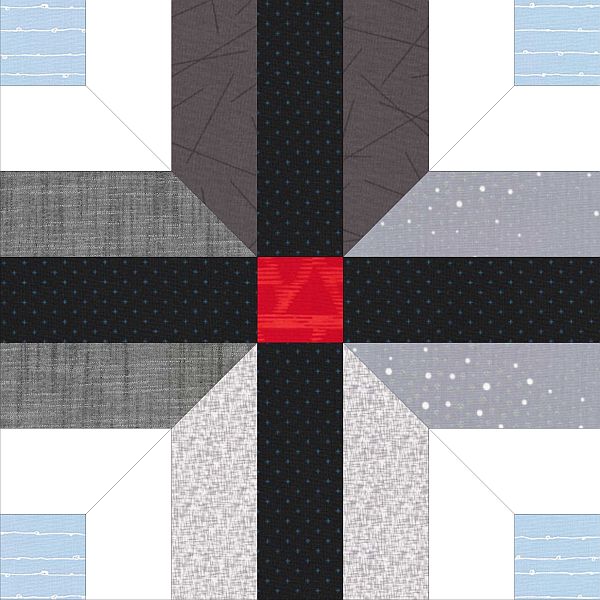
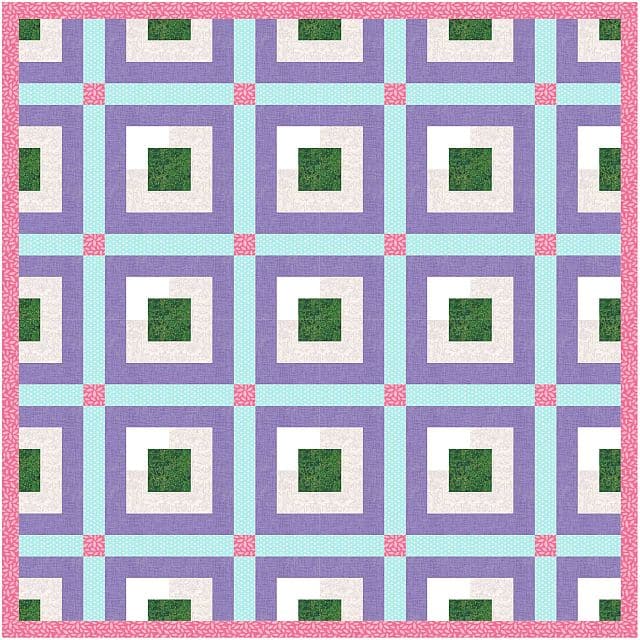
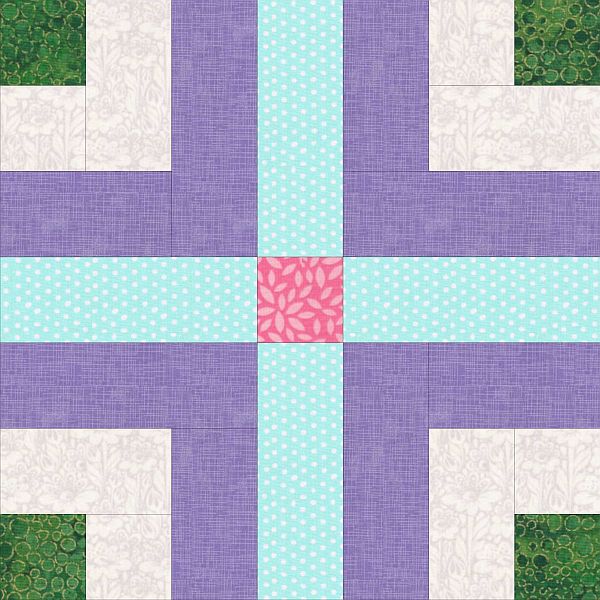
Fabric Requirements for a 14″ City Gardens Block
- (1) 2-1/2″ Pink center
- (4) 2-1/2″ Green squares for the garden
- (4) 2-1/2″ White squares and
- (4) 2-1/2″ x 4-1/2″ White rectangles for the wall
- (4) 2-1/2″ x 4-1/2″ Purple rectangles and
- (4) 2-1/2″ x 6-1/2″ Purple rectangles for the walkway
- (4) 2-1/2″ x 6-1/2″ Purple rectangles for the sky
Here are Some Ideas
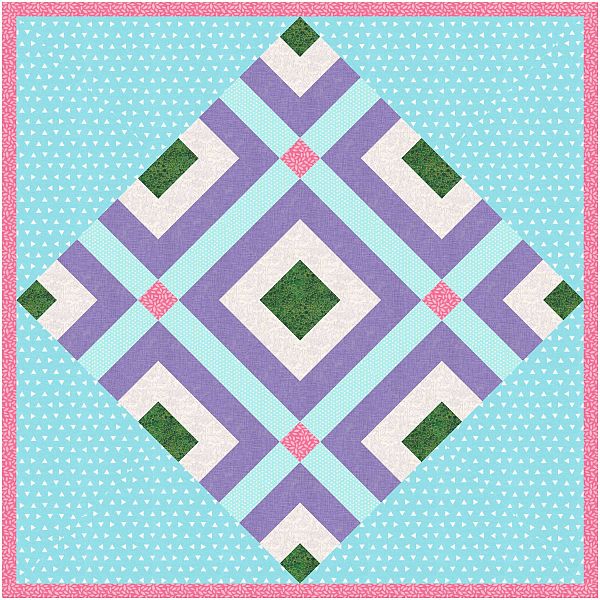
Learn more about Piecing a Block on Point here.
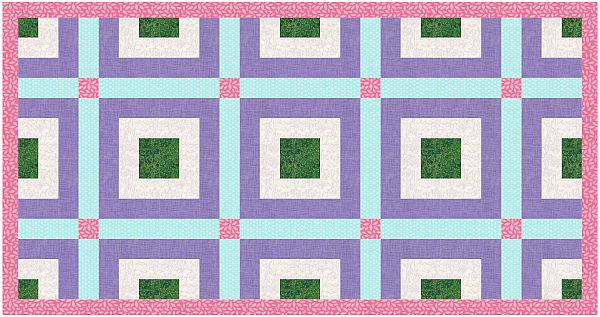
Which one will you make?
Other Designers
Monday August 19
- MooseStashQuilting
- Ms P Designs USA
- Elizabeth Coughlin Designs
- Quilting Between the Rails
- High Road Quilter
Tuesday August 20
Wednesday August 21
Thursday August 22

